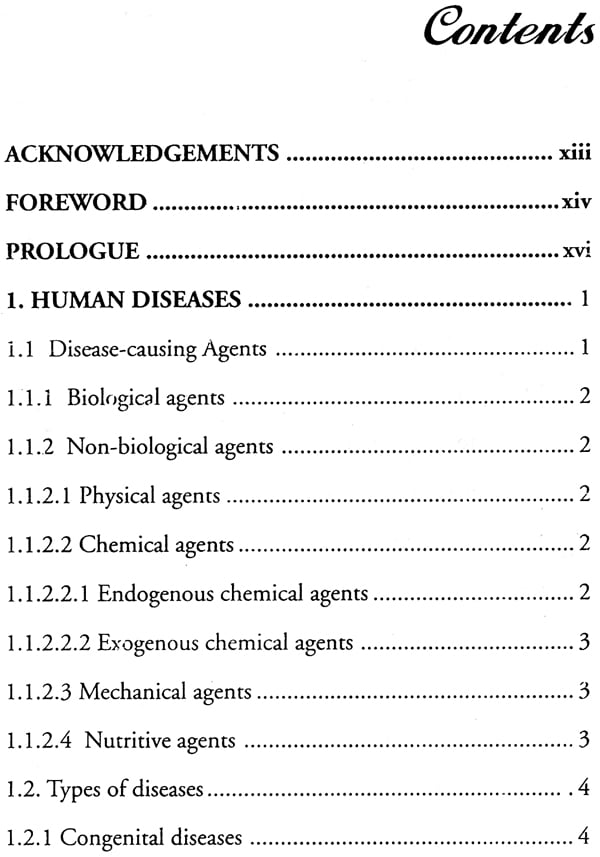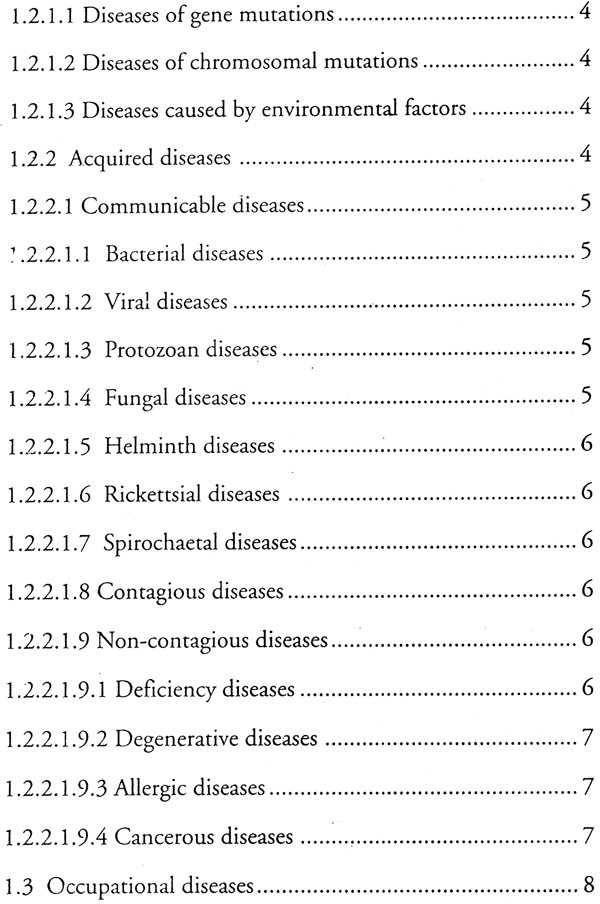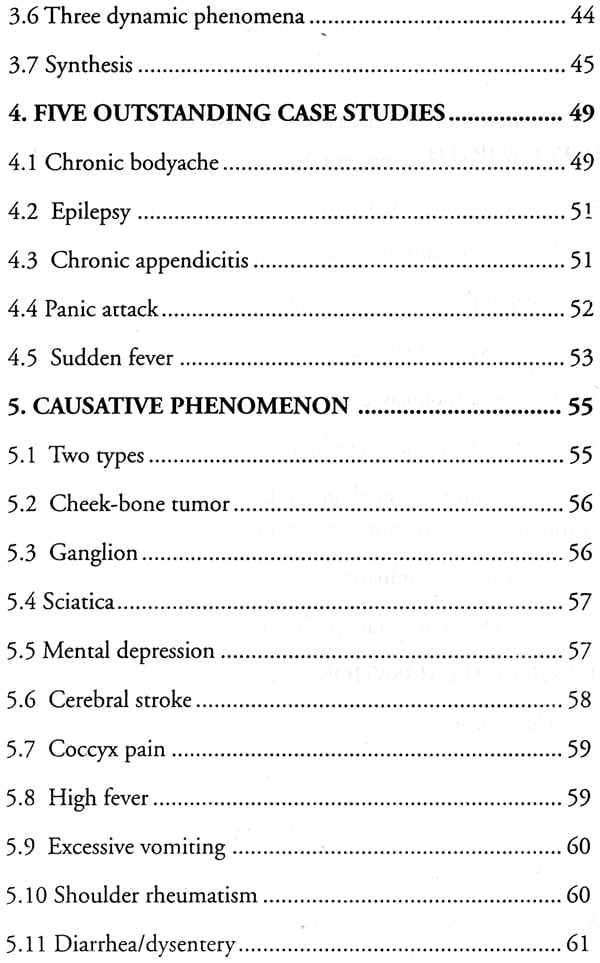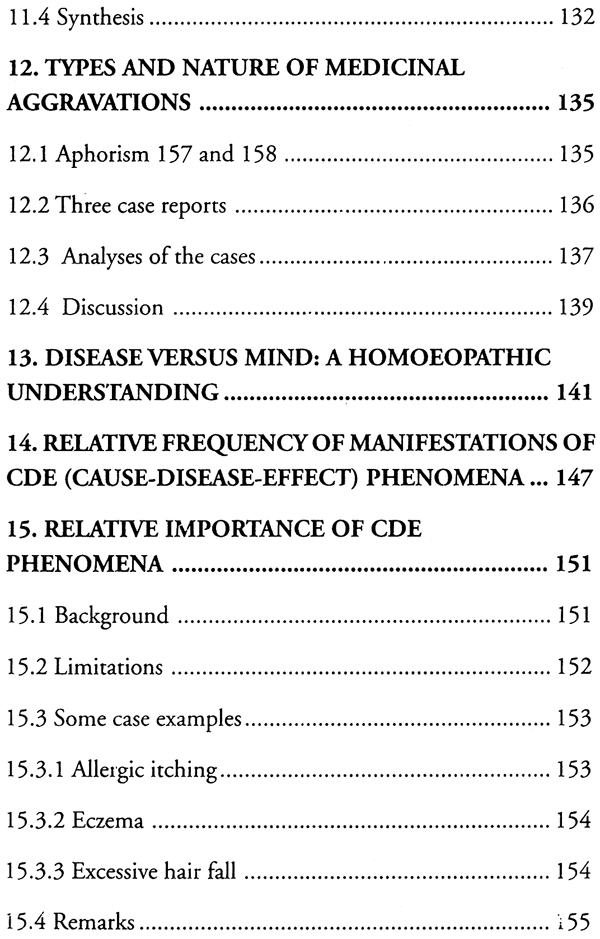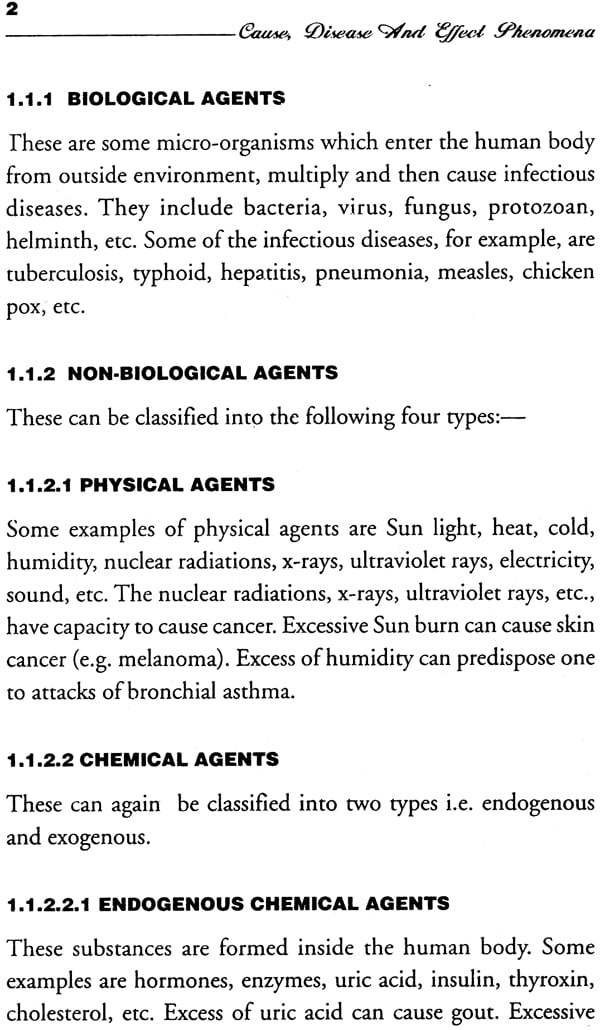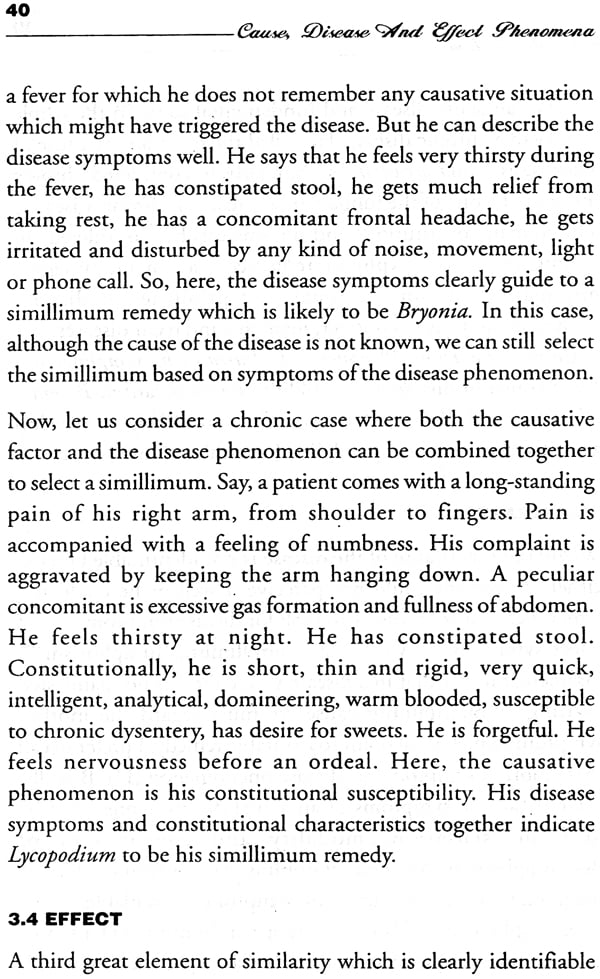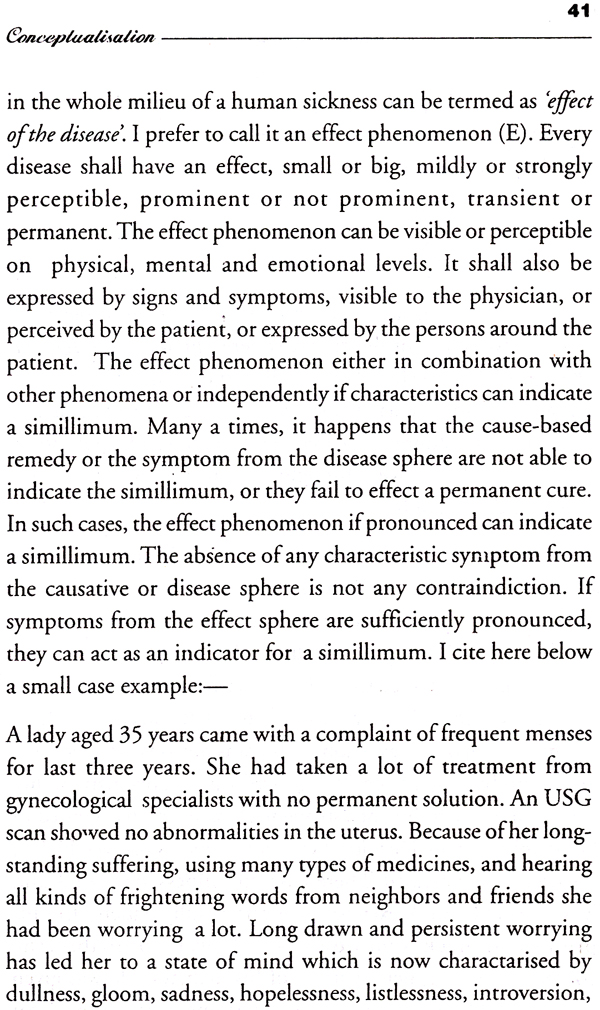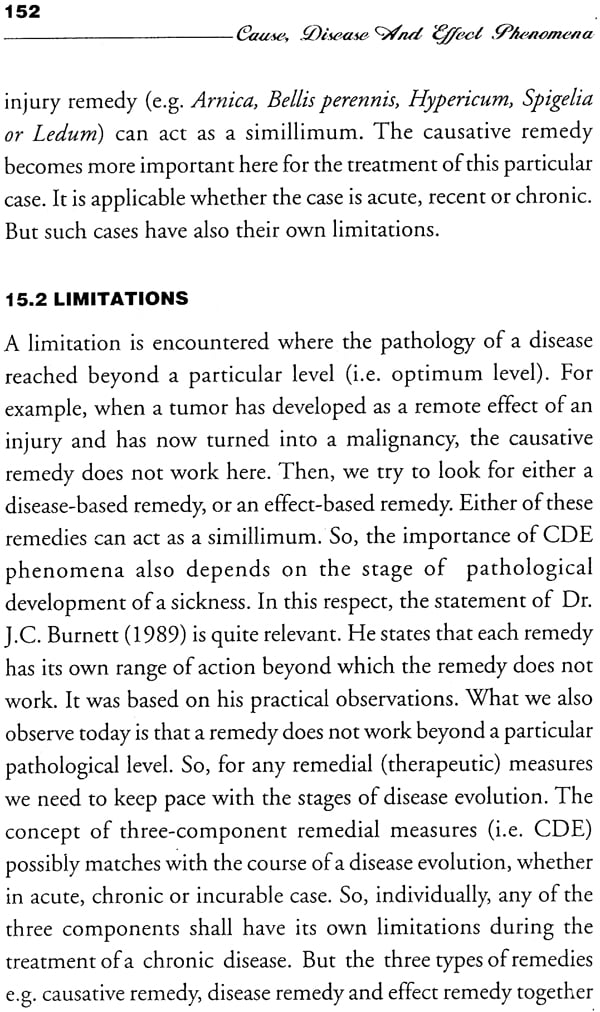
Cause, Disease and Effect Phenomena (Fundamental Aspects of Homoeopathy)
Book Specification
| Item Code: | NAS299 |
| Author: | Dr. Ranjit K. Roy |
| Publisher: | B. Jain Publishers (P) Ltd |
| Language: | English |
| Edition: | 2001 |
| ISBN: | 81702110935 |
| Pages: | 186 |
| Cover: | PAPERBACK |
| Other Details | 8.50 X 5.50 inch |
| Weight | 200 gm |
Book Description
New data, concepts, ideas, analysis, interpretations, evaluation and synthesis are constantly enriching the field of homoeopathic therapeutics. This book on ‘cause, disease and effect phenomena’ presents new ideas and ways of considering, evaluating and interpreting human diseases and making strategies for their treatment. Method of splitting a human sickness into three clear-cut component phenomena and evaluating each phenomenon in its own worth is an innovative idea. It looks very systematic, logical and scientific. Practically, all homoeopathic methodologies work on these three spheres of symptoms.
New data, concepts, ideas, analysis, interpretation, evaluation and synthesis are constantly enriching the field of homoeopathic therapeutics. This book on ‘cause, disease and effect phenomena’ by Dr. Ranjit K. Roy also presents before us some new ideas and ways of considering, evaluating and interpreting human diseases and making strategies for their treatment. Method of splitting a human sickness into three clear-cut component phenomena and evaluating each phenomenon in its own worth is an innovative idea. It looks very systematic, logical and scientific. Practically, all homoeopathic methodologies work on these three spheres of symptoms, though not clearly distinguished at present. Differentiating the effect phenomenon of a disease is a new element introduced by the author into the aspect of remedy selection. It is actually the cause, disease and effect symptoms which represent a Hahnemannian Totality. Inclusion of human constitution and miasm in the category of causative phenomenon can play a vital role in disease evaluation and treatment strategy as emphasized by the author. It is also quite revealing that the author attempted to relate some of the homoeopathic phenomena (e.g. miasm and constitution) to But it is almost forgotten by the most neophytes of homoeopathy after formal education. Homoeopathic » methodologies cannot progress leaving the work of Organon in the backyard. The Organon, a core of homoeopathy, needs to be worked out and expanded further along with the Materia Medica and Repertory for overall progress of homoeopathic therapeutics. This book is a preliminary effort to work on a few aspects of the Organon which Master Hahnemann experienced, visualised and discussed particularly about diseases, causations, constitutions and miasms. His valuable directions, ideas, concepts, experiences and methodologies are depicted in various paragraphs of the Organon.
Due to intricate and disseminated nature of the information spread over the whole of Organon, the students of homoeopathy particularly the neophytes often face dilemas in clearly conceiving some of the essences of remedy evaluation. It is in this context that I attempted some efforts to analyse and systematise a few aspects of the Organon. What I could observe from Master Hahnemann’s discourse through the Organon is that a human sickness is constituted of and can be split into three distinct component phenomena. These are which I described as ‘causative phenomenon’, disease phenomenon’ and effect phenomenon’ of a human sickness. These are three most fundamental aspects of homoeopathy on which the paradigm of remedy selection can be based. The spectrum of totality of symptoms or essences or characteristic (peculiar) symptoms, all actually belong to these above three categories of phenomena. This way of considering basic spheres of symptoms and an understanding of a human sickness on these terms can probably add to homoeopathy another strong foundation as a healing science. The collection, analysis and evaluation of symptoms — all generally proceed from this structured foundation.
Mixing up of all categories of symptoms at random probably makes the selection methodology of totality more complex and confounded, particularly to the most neophytes. The concept of cause, disease and effect phenomena of a human sickness is a scientific fact and systematically provides at the fundamental level a very logical and scientific basis for further work on an important aspect of homoeopathic therapeutics, the selection of remedies.
The subject of Homoeopathy is very vast. Master Hahnemann introduced this subject as a healing art in the year 1796. Since then it has grown over the last 200 years. Now its volume is stupendous. In spite of its vastness, homoeopathy has three main component parts. These are the Organon of Medicine, the Materia Medica and Repertory. The Organon provides us the main principles of homoeopathic methodologies. The Materia Medica presents us the medicinal symptomatologies and the Repertory does the classification of symptoms. Both Materia Medica and Repertory are used for working procedures to select simillimum. The Materia Medica was formed from the provings of medicines and clinical experiences. The Repertory is a unique structure of individual symptoms of the Materia Medica, organised systematically, under various broad and minor rubrics. A lot of further work are seen on the Materia Medica and Repertory. On the other hand, further work on the Organon have been rather limited although there is equally great scope to work on the Organon.
The importance of the Organon is that it is the main foundation of homoeopathy as a healing science. Every para of the Organon has its deep meaning, values and implications.
certain molecular biological entities/events. Such efforts to integrate molecular biology into homoeopathy from various angles can be a good step and beneficial for greater understanding of many homoeopathic events. In short, this book shall benefit many of the students, researchers and practitioners in the field of homoeopathy.
**Contents and Sample Pages**
